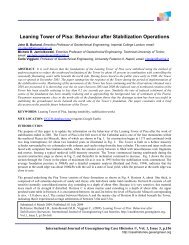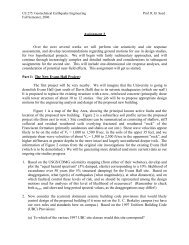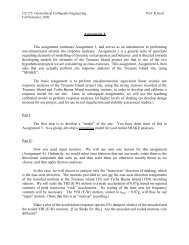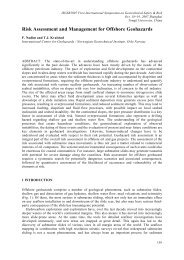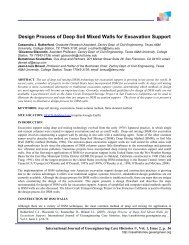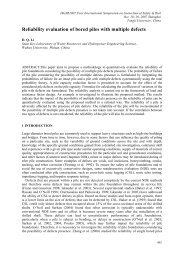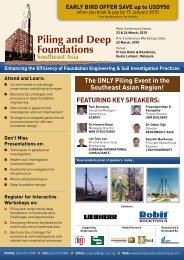Homework 3 (pdf) - Geotechnical Earthquake Engineering
Homework 3 (pdf) - Geotechnical Earthquake Engineering
Homework 3 (pdf) - Geotechnical Earthquake Engineering
Create successful ePaper yourself
Turn your PDF publications into a flip-book with our unique Google optimized e-Paper software.
(d) The deep, dense gravelly sands are underlain by additional Old Bay Clays (CH/CL). These<br />
are even older, and so are even stiffer and stronger. Treat these as an extension of the Old<br />
Bay Clay unit from above the gravelly sands. Again, remember that we also have V s data,<br />
but that SASW does not work well in the “shadow” just below a stiffer layer (e.g. the<br />
gravelly sands), and that we are very deep for SASW!<br />
(e) Our site investigations (both borings and testing, as well as SASW) provided essentially no<br />
useful, quantitive data regarding the weathered shale and the harder, more intact sandstone<br />
“bedrock” underlying the deep clays. Refer to Figures 1 and 2. Dickenson assigned Vs =<br />
730 m/sec to the weathered shale, and treated the sandstone as an elastic halfspace with Vs =<br />
1,220 m/sec. Do these values seem reasonable? Now, feel free to choose your own.<br />
4. Finally, prepare a full proposed site profile, divided into sub-layers, for your response<br />
analyses. Show the proposed profile of V s vs. depth, and provide figures showing your<br />
proposed relationships for G/Gmax vs. γ and B vs. γ for each soil and/or “rock” unit,<br />
including the base “rock”.



